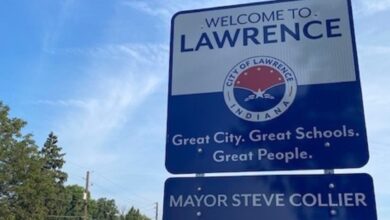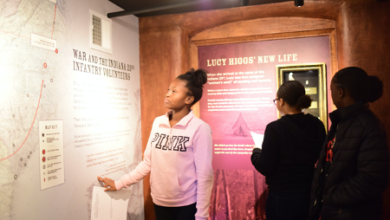Racism still a major issue in Indiana

From: Scott Keen
Columbus
I’m an old white guy, born in 1955 in tiny, rural Knox, Indiana, oddly just 54 miles from Michael Jackson’s 1958 birthplace in Gary.
Back then, many white Knox men commuted to Gary to work with Black men in the steel mills, but no Blacks from Gary (or anywhere) ever set foot in Knox.
As a kid, I wondered why.
Growing up, I learned some things:
Indiana was never a slave state but still “grandfathered” existing slaves upon gaining statehood. Indiana’s second constitution in 1851 included Article 13, stating “No negro or mulatto shall come into or settle in the State…” and levied fines for doing business with Blacks. It was finally repealed in 1866, after “only” 15 years.
Hoosiers enthusiastically supported fugitive slave laws, capturing and returning freedom-seeking humans to their southern owners. Nineteenth century Hoosier newspapers routinely ran ads offering bounties for runaway slaves.
Indiana’s underground railroad helped Blacks escape the south, but preferred they kept moving north out of Indiana towards friendlier Canada.
In 1920s Indiana, government, social institutions and Protestant churches were pervaded by the Ku Klux Klan. The national KKK, headquartered in Indianapolis, espoused “America First” for “One-hundred-per-cent Americans” (white Anglo-Saxon Protestants). Ironically, in rural Indiana, other efforts at keeping Blacks out were so effective that the Klan found few to harass, so they focused their ire on white Catholics and Jews.
The national KKK newspaper “The Fiery Cross” was published in Indianapolis. Valparaiso University, midway between Knox and Gary, was almost purchased by the KKK in 1923.
“Sundown” towns were ubiquitous in Indiana. An acquaintance recalled a 1950s “sundown” sign in a small northern Indiana town. It said “don’t let the sun go down on you here tonight.”
In the mid-60s I viewed relic photos of local KKK rallies, complete with hooded men burning crosses, periodically displayed at the Knox library.
No Black farmers in Indiana? The long, malevolent history of USDA discrimination against Black farmers had its effect. In 1910, 14% of the US farming population was black. Today it is 1.4%.
My future wife, living in a small northern Indiana town, greeted a new high school locker neighbor one Friday in the early 70s. A Black kid, from “the only black family in town,” had just moved in.
Their house burned down over the weekend. They left town.
The KKK remains active, even in Knox, where a woman fatally shot her “Indiana Grand Dragon of the Invisible Empire of the KKK” husband in 1999.
Around that time, school sporting events hosted by Martinsville were often marred by racist abuse of visiting teams.
This May, a Black Indianapolis woman selling her house received unrealistically low appraisals. After removing all references of blackness from the house (family photos) and having the house listed by a white friend, subsequent appraisals more than doubled.
Indiana’s population is 10% Black, lower than 35 other states. It’s jailed population is 34% Black.
I wonder why? Is it a history like this, or did Black people just never come to appreciate Indiana’s famous Hoosier Hospitality?
























































